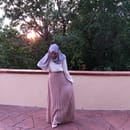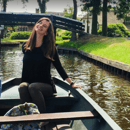Trigger warning : War, genocide, violence.
On April 6th 1992, Bosnian Serb forces besieged the Bosnian capital city of Sarajevo. It was the longest siege of a capital city in modern history, lasting for almost 4 years. The former Winter Olympics city went from being one of the wonders of Europe, to being almost unrecognizable due to the horrors she had to endure over the course of 4 long years of war and genocide. Bosnia and Herzegovina declared independence from Yugoslavia in 1992 which sparked the war. A city which is nicknamed “Jerusalem of Europe” because of its multiethnic population that coexisted for so many years turned into a city where neighbors became enemies. Teachers became capable of burning the homes of their students just because they belonged to another ethnic and religious group. A total of 13,952 people were killed during the siege and around 100,000 people were killed throughout the country. An estimated 80% of those victims were Bosnjaks (Bosnian Muslims) who were the targets of an ethnic cleansing campaign carried out by the Army of Republika Srpska in various cities, towns, and villages across the country.
The small Southeastern European country became the world’s center of attention in the 90’s and then quickly became forgotten about. But the people of Sarajevo will never forget what happened to them. The memories of the war are engraved in their minds forever. Soldiers broke into people’s homes, rounded up the men, and sent them to concentration camps. The women and children were exiled from their homes. Many of the victims were not allowed to return to their homes, either because it was destroyed, or because the soldiers who kicked them out moved into them. Mosques were bombed by VRS troops and villages went up in flames. Soccer fields were turned into graveyards. Children saw their fathers go to fight in the war and never come back, they saw their mothers get shot while going to the store. People watched their neighbors and best friends turn against them because of nationalism. There was no longer a safe place in Bosnia.
During the 4 year long siege, children were the biggest victims of the war. Researches suggest that an estimated number of 1,500 children were killed. Thousands more were left as orphans and displaced from their homes. Playgrounds and schools were destroyed. They watched their friends lose their lives just for going outside to play. They lost limbs while in line to get water for their families. They became the victims of sniper fire while on their way to school. They learned to fall asleep to the soft rumbling of incoming attacks and the distant sounds of gunfire. These children lost their childhood to the worst horrors that mankind brings. But even during war, children were also what brought light to the city. They tried to live their lives as normally as possible, playing in the streets when it was deemed “safe” even though the sound of gunshots could be heard echoing from the nearby mountains. Kids collected bullets and played in burned out cars like their lives weren’t falling apart around them. They kept the spirit of the city alive while mortar fire and grenades destroyed their schools and homes. These children of war lost more than anyone could imagine, but without their incredible resilience, the city wouldn’t have been able to recover.
Sarajevo is home to some of the oldest monuments and historical sites in European history. Sarajevo City Hall, known as the Vijecnica, was built during the Austro-Hungarian period and was shelled by Bosnian Serb soldiers. Tons of historical documents were destroyed and hundreds of years of history was erased in one night. Civilians and librarians tried to save some of the books in the library while under sniper fire, but more of them were burned. Since then, Vijecnica has been restored and is used for many events such as concerts and exhibitions. The popular Trebevic cable cars were destroyed and then rebuilt and reopened in 2018. Sites of the 1989 Winter Olympics were damaged by shelling . 500 year old mosques built during the period of the Ottoman empire were damaged by shelling. Many homes and apartment buildings have bullet holes in them, the mortar holes in the streets are filled with red paint to symbolize the blood that used to cover the streets.
The war came to an end on December 15th, 1995 with the Dayton Peace Agreement. 28 years later since the start of the war and the streets of Sarajevo are filled with people. Children play in parks and people go shopping in the famous Bascarsija bazar. The smell of fresh bread and traditional coffee fill the air mixed with the sound of the call to prayer and church bells. The people of Sarajevo returned to their normal lives, but the reminders of war are everywhere. Every year, the bodies of loved ones who went missing during the war are found and finally put to rest. The death toll continues to rise despite the war being over for almost 3 decades. The hillsides are covered with white grave stones belonging to those who were killed. The city and its people are still recovering but the spirit of the Bosnian people is so strong that you wouldn’t be able to notice the pain behind people’s smiles. Bosnians are determined to rebuild their country and their lives without forgetting the past.



